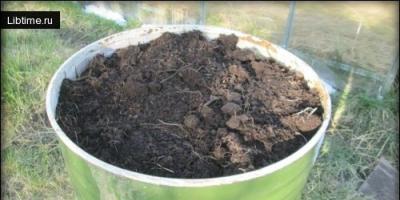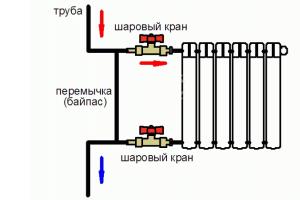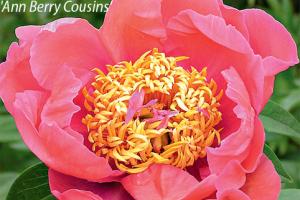As you know, garlic is a vegetable that can be sown before winter. In order to get a good harvest next season, you need to perform several actions that will help you disinfect the seed and subsequently protect the plants from various diseases.
Rules for processing garlic before winter sowing
To choose the right garlic for autumn sowing, you need to know what winter varieties look like
When sowing garlic before winter, it is necessary to choose winter varieties. To avoid confusion, remember that the heads of such garlic consist of several cloves of approximately the same size, neatly located around the central stem.
Calibration
This activity must be carried out immediately before soaking, otherwise there is a risk that the bottom of the cloves will dry out, which means that it will be difficult for the future plant to form a root system.
- Select the largest and strongest heads and disassemble them into cloves. Immediately remove those that are obtained from the same head and are very different in size, from a head formed by a small number of cloves (3-4), as well as those that are fused at the tops.
- If you have enough space in the garden bed, then sort the remaining cloves by size (large, medium, small) so that you can later plant seed of the same size in a separate area. If there is not enough space for sowing, leave only the largest cloves.
- Clean a few cloves completely to make sure they are free of stains, rot, holes, etc. If there are no sick or rotten ones among them, then there is a high probability that the other segments are healthy and suitable for sowing. There is no need to sow peeled cloves; they can be eaten.
- Carefully inspect the cloves remaining in the shell - they should also not have any defects. Pay attention to their bottoms: they should be gray in color, without mold or damage.
- If there is dry husk left on your garlic, then do not remove it: experienced gardeners believe that this can damage the outer layer and thereby reduce the plant’s immunity, including its winter-hardy qualities.
To sow garlic, you need to select the largest cloves without signs of disease.
If you want to plant garlic cloves grown in the same season, make sure they are well dried: wet cloves may germinate soon after planting.
Soaking and disinfection

There are a large number of recipes for disinfecting compositions, and you can choose the one that is most suitable for you.
- Ash solution. Dilute 2 cups of ash (approximately 400 g) in water (2 l), boil for 30 minutes and cool. When the solution reaches room temperature and separates, pour the light part into a separate container and place the cloves in it for 1 hour. After processing, the cloves must be washed.
- Potassium permanganate solution. Dissolve 1 g of powder in clean water (200 ml) and place the prepared cloves in the solution for 10–12 hours. Also, do not forget to rinse the solution in clean water.
- Double processing. Dissolve salt (6 tbsp) in a bucket (10 l) of water and place the cloves in the resulting solution for 2-3 minutes. Then immediately put them in a solution of copper sulfate (1 tsp per 10 liters of water). Plant the cloves treated in this way on the garden bed without washing them.
- A solution using a disinfectant. This method is especially advisable to use if signs of disease are detected on the cloves. Gardeners especially recommend using a solution of Fitosporin-M: dilute 10 g of powder in 0.5 liters of water, put the cloves there and leave for 30 minutes. There is no need to rinse the cloves.
Before winter sowing, garlic must be treated in a special solution.
If you do not have the opportunity to prepare a solution, then you can calcinate it: heat the oven to 40–42 degrees, place the cloves on a baking sheet lined with paper and heat them for 10–12 hours.
As you can see, preparing winter garlic for sowing is not difficult and even a novice gardener can handle this work. Follow all the rules and you will certainly ensure a good harvest.
Many gardeners plant winter garlic in the fall. In order for garlic to be well accepted and actively grow and develop in the spring, it is necessary to disinfect the planting material before planting.
Winter garlic is a large bulb consisting of 6 to 10 cloves. The teeth are located evenly around the stem.
We plant winter garlic 15-20 days before the onset of cold weather. In each region this period begins at different times. I plant garlic in mid-October.
How to squeeze winter garlic:
- Teeth
- Single clove bulbs (sets), which we grow from aerial bulbs,
- Bulbs.
How to treat winter garlic before planting
Planting material must be processed before planting. This will avoid diseases and pests. There are several options for disinfecting garlic; each gardener chooses his own method.
Salt and copper sulfate.
Copper sulfate can be purchased at any specialty store. Table salt is available in every home, so you can start processing the garlic before planting.
To do this, we inspect the garlic cloves and select only healthy, undamaged ones for planting. Place the cloves in a cloth bag and soak in a saline solution for 2-3 minutes. We dilute the saline solution in a ratio of 3 tbsp. salt per 5 liters of water.
Immediately after this we lower it into a solution of copper sulfate. To do this, dilute 1 tbsp in 10 liters of water. l. drug. Soak the garlic in the solution for 2 minutes. After which we immediately plant the garlic in a previously prepared bed.
Potassium permanganate.
To process garlic, prepare a light pink solution of potassium permanganate. Place winter garlic in the solution for 2 minutes. It is more convenient to carry out the procedure by placing the garlic cloves in a cloth bag. After processing, plant the garlic on a fertilized bed.
Insecticide solution.
It is very good to treat garlic against pests in a solution of a broad-spectrum insecticide. Karbofos copes with this task effectively.

Wood ash.
Wood ash is not only an excellent fertilizer, but also a useful solution. To ensure that garlic grows actively, we treat it with wood ash diluted in water in a ratio of 300 g of ash to 10 liters of water. I most often use this solution for spring garlic, not winter garlic.
If the garlic has been well processed and planted on fertilized soil, then in the spring, as soon as the snow melts, the garlic will actively begin to grow. As soon as the snow melts, I recommend loosening the soil so that there is access to oxygen, and the sprouts will quickly break through the earthen crust.
With the onset of October, summer residents begin preparing to plant winter garlic. Many questions arise due to the fact that in different years this crop can please the gardener, and sometimes disappoints. They blame the weather, the abundance or lack of rain.
In fact, next year's harvest is determined by the quality of the seed. The slices must be prepared in advance before planting.
The quality of the soil where the planting material will be planted also plays a significant role. Therefore, the issue should be considered as a set of preparatory work for planting garlic before winter.
This culture reproduces vegetatively (while the issue of planting bulbs is not being considered, another article will be written about this). All positive and negative properties will be transferred to the new plant, which after the formation of the root system begins.
If the mother plant has any diseases, they will appear most clearly in the spring. Next year, hereditary characteristics will be fully revealed.
Pre-planting treatment is aimed at maximizing the elimination of fungal spores. Prevention from diseases is a prerequisite for a high harvest with good quality.
The All-Russian Plant Institute (VIR) conducted research on the effect of hereditary diseases on the quality of winter garlic. Based on numerous experiments conducted over several decades, interesting data have been obtained. They must be taken into account during preparation for planting.

Extract from the results of studies of hereditary diseases of winter garlic:
| Winter garlic variety | Period of research, years | Disease of the parent material (signs are present on one clove, the rest are healthy) | Manifestation of the disease in inheriting plants, % |
| Elenovsky | Aspergillosis (black mold) | ||
| Penicillosis (green mold) | |||
| Fusarium (bottom rot) | |||
| White rot | |||
| Cervical rot | |||
| Bacteriosis | |||
| Rust | |||
| Garlic nematode | |||
| Gulliver | Aspergillosis (black mold) | ||
| Penicillosis (green mold) | |||
| Fusarium (bottom rot) | |||
| White rot | |||
| Cervical rot | |||
| Downy mildew (downy mildew) | |||
| Bacteriosis | |||
| Rust | |||
| Garlic nematode | |||
| Lyubasha | Aspergillosis (black mold) | ||
| Penicillosis (green mold) | |||
| Fusarium (bottom rot) | |||
| White rot | |||
| Cervical rot | |||
| Downy mildew (downy mildew) | |||
| Bacteriosis | |||
| Rust | |||
| Garlic nematode |
Attention! Diseases are inherited. Some are completely deprived of the harvest. Therefore, if there are only possible signs of a particular disease, measures need to be taken.
It’s easier to prevent disease from entering the garden beds than to eliminate it long and hard and then worry that all your efforts are in vain.

Algorithm for preparing garlic for planting
To make certain work easier, you need to do it in a certain sequence.
Selection of winter garlic heads
When selecting heads, they are assessed according to several indicators:
- size, it is known that garlic inherits the properties of the mother plant. It is difficult to expect large children from a small parent;
- cloves of the same mass. Quite an important characteristic. In the future, we can hope that in the future plant all the cloves will grow aligned;
- healthy, without signs of disease or looseness. Any disease, even if it does not appear on all cloves, is already present in a specific head. It will definitely spread to everyone else. This is evidenced by the data in the table above.

Along the way, they evaluate how dense the peel is. In a good plant, it does not come off on its own, but fits tightly to the edible part.
Attention! Before winter, you can plant not only winter garlic. Spring planted in autumn in spring grows ahead of spring plantings.
It's easy to distinguish them. In winter, the denticles are formed around the central rod. The spring stem does not have a stem; the denticles form several concentric circles.
Separating the heads into cloves
Plantings are carried out with separate cloves. You have to put in some effort. Soaking will help. A few minutes in water softens the thick skin.
It is advisable not to damage the covering of the cloves. They protect the pulp from damage and infection.
You should also pay attention to possible contamination. You need to examine the bottom; it happens that there are no signs of roots there. Such teeth will not grow.
When preparing a solution for soaking, add a few grains of potassium permanganate to it; you want a slightly pink color. The desired temperature is 20...25 °C. Exposure is about half an hour.

What can you soak the cloves in before planting?
Potassium permanganate (potassium permanganate)
Potassium permanganate is used most often. Kills harmful microflora, inhibits most fungi, saturates the skin with potassium, which will later be used as fertilizer.
Not dangerous to humans, but it is best to work with rubber or latex gloves. At high concentrations, traces may remain on the skin.
Ash liquor
If you dissolve wood ash in water and mix thoroughly, then after a while the solid dust-like components will settle. Potassium and calcium hydroxides are formed in the solution itself. They have a pronounced alkaline reaction.
These solutions have a detrimental effect on nematodes, which may be hidden under the scales of the cloves.
Phytosporin solution
To prevent a whole range of diseases: fungal infections, protection against root rot, powdery mildew, and other infectious lesions, it is recommended to use the drug “Fitosporin-M”.

According to the instructions, you need to dissolve the powder in 1 liter of warm water (25...30 ° C), put garlic cloves in it for 30...60 minutes.
The solution is further diluted 10 times. It is poured into the ground (along the holes) where planting will take place.
Fungicide "Maxim"
"Maxim" is recommended for all types of root vegetables. It prevents the development of a large number of soil-borne plant diseases. It's easy to use. Used for cultivating soil, as well as for soaking and dressing bulbs, cloves and other types of planting material.

Copper sulfate
Copper sulfate (copper sulfate) is one of the most common fungicides. It is used everywhere for disinfection. Treating garlic before planting in a solution of copper sulfate is guaranteed to destroy any infestations that may exist.
- You need to dilute 5 g of crystals in 1 liter of water.
- Stir the solution.
- Place the cloves for 5...10 minutes.
- Let the solution soak into the skin.
- After treatment, natural drainage and drying of the planting elements is desirable.
A simple algorithm, every gardener can easily and quickly prepare garlic for planting. For the winter and coming spring, the copper sulfate remaining on the surface will be enough to prevent the development of the disease.

Table salt
Every home has regular table salt. It is used for disinfection and storage. For processing, you need to prepare a concentrated solution. Dissolve two heaped tablespoons (about 80 g) in a liter of water. To improve the surface active effect, add 1 teaspoon of baking soda. The solution is stirred.
A weak alkaline reaction helps soften the shells and penetrate the pulp. The main action is needed not on the surface, but under the scales, where the fungus may be hiding. The treatment is carried out by soaking for about 15...30 minutes.
When finished, let the remainder drip off. Then you can send the planting material to the garden bed.
Disinfecting the beds before planting
Experienced gardeners do things differently.
Marking planting holes
To plant garlic, use a marker. This device is the width of the bed (50...80 cm). It has pegs located at a certain distance. To plant garlic, it is recommended to sow in rows at a distance between rows of 18...25 cm, and a gap of 7 cm and above is maintained in the row.
Several interesting designs of markers have been invented and used. They are easy to use.
The designs of the devices are easy to replicate. If desired, every vegetable grower can make them.
Disinfection of holes
Having prepared the holes in the beds, all that remains is to disinfect them. The easiest way would be to pour 150...200 ml of boiling water into each. But this method will only temporarily prevent the appearance of pests and diseases. More effective solutions are needed.
To water the holes, use a three percent solution of copper sulfate (30 g of crystals are dissolved in 1 liter of water or 300 g in 10 liters). 50...70 ml is poured into each seat.
Some vegetable growers place small pieces of toilet paper at the bottom of the hole to prolong the effect of the disinfecting solution. The fungicide will be stored in such a battery. Even a planted clove will be protected by the drug for a long time.
To avoid losses in the spring, you need to protect the garlic in the fall.
To get a healthy and generous harvest, you need to know certain subtleties of planting: choose the right place, follow the planting sequence to restore the soil, prepare the soil, select suitable seedlings, properly plant and fertilize the plant, and then provide regular care for the beds.
There are no particular difficulties with garlic; it is a bactericidal plant that independently copes with many negative factors. However, in order for the harvest to be tasty and plentiful, you need to work with the seedlings.
How to get a high-quality garlic harvest
Fragrant, spicy garlic cloves are obtained from winter plants. They emerge early in March and ripen all summer, gaining juice and useful minerals. The head of such garlic has a central core and large, dense cloves located around it. It is this kind of garlic that is planted in the fall for rooting.
A good full-fledged harvest is obtained from the germination of large teeth, but so that the flavor and aromatic properties of the plant do not disappear, seedlings sometimes need to be renewed and diluted through spring propagation. In spring, garlic is grown through bulbs. As a result, by autumn, young juicy heads with small multiple teeth are obtained. They do not have such noble spicy qualities as large garlic, but they add sharpness and piquancy to dishes, and as seedlings they refresh garlic juices.The first spring harvest obtained as seedlings is not used for culinary purposes, but is all planted for winter crops. A good harvest from such seedlings will only be in the second year.
One way or another, winter garlic is planted in October after Indian summer, when cool temperatures set in. Planted cloves take root, but do not have time to germinate before the first frost. By spring, the plants begin to produce early greenery and ripen.
How to choose good garlic for seedlings in winter
Select only dense, whole, dry large heads without signs of disease. All dubious, loose, darkened fruits are unsuitable for reproduction. The bulbs are divided into slices, but not peeled. The natural film protects the garlic teeth from drying out, rotting and harmful microorganisms. All small and thin cloves should be discarded. This garlic will come in handy in the kitchen. It is also better not to plant slices with damaged film; there is a chance that they will not overwinter in the soil.
The onions should be disassembled into slices 2-3 days before planting, otherwise the root bed may dry out and lose the ability to germinate.
To ensure that the cloves are not infected with fungi that may develop in the soil after planting, they must be sterilized.

The easiest way is to dry the teeth in the oven. This is done very carefully so as not to bake the garlic in its own juice, otherwise it will lose its vitality and will not germinate. To roast garlic for sterilization, you need:
- preheat the oven to 40-42 degrees;
- Line a baking sheet with a sheet of parchment and distribute the garlic cloves on it;
- Do not close the oven door tightly to allow air ventilation;
- dry the garlic for 9-12 hours, turning on different sides;
- Pay attention to safety if the oven is gas.
It’s even better to use a special electric dryer or frying oven, with the garlic placed on the surface.
Another way to process garlic is to rinse it in potassium permanganate. You will need to make a weak pink solution in the proportions of 1 tsp. manganese powder per 10 liters of hot water. The seed should be soaked in this composition for 10 hours.
Another good remedy is lye ash. It is enough to dilute 400 g of ordinary wood ash in 2 liters of water and boil the composition for 30 minutes. After it has cooled, you need to place the garlic cloves in the liquid and soak for 2 hours. This method is environmentally friendly and suitable for supporters of natural plant processing.
After sterilization procedures, the cloves are dried.
Removing diseases from planting material
The recipes proposed above are necessary for preventive purposes. If obvious traces of disease are found on the garlic, it’s too early to get upset; you don’t have to throw away the seedlings. You can use the drug Fitosporin-M for treatment. It is diluted in water according to the instructions and the seed is soaked for half an hour. Before planting garlic, this solution also needs to be poured into the holes in the garden bed.
An alternative remedy is Maxim. These household substances will relieve plants from fungal and bacterial diseases and save the future harvest.
Another method of ecological cleaning of seedlings is rinsing with a 1% solution of copper sulfate. The procedure is done in stages:
- First prepare the salt mixture. 3 tbsp. kitchen salt should be diluted in 5 liters of water. Leave the garlic cloves in this liquid for 2 minutes.
- Then soak for half an hour in vitriol. The solution is made from 1 tsp. substances per 10 liters of water.
It is necessary to combat lesions on seed material due to the fact that the development of fungal and bacterial diseases in the soil threatens not only a specific sprout, but also neighboring plants. In order not to spoil the entire harvest, processing is simply necessary.

- 2 weeks before planting garlic, the soil is dug up and sprinkled with potassium sulfate and double superphosphate - 2 and 1 spoons per square, respectively. The soil is also generously fertilized with humus. The prepared beds are allowed to breathe and settle, and only after 14-16 days the garlic is planted in the ground.
- A couple of days before planting the seed, the soil needs to be treated with carbamide (urea). The consumption of the substance is based on 1 tbsp. per 2 square meters of land. In dry weather, after such treatment, the soil must be watered generously.
- If garlic is planted after potatoes or tomatoes, the soil must be treated with copper sulfate to remove possible traces of plant fungi. The solution is made according to the classic recipe: 1 tbsp. copper sulfate is diluted in 2 liters of heated water. 10 liters of solution can treat 2 square meters of beds.
Some owners refrain from using synthetic fertilizers and do not want chemical solutions to get into their crops. If you need natural treatment of the soil against fungi, the beds are first planted with greenery, and then dug up, leaving compost in the ground.
Planting of “fertilizer” occurs in mid-August – early September. Mustard, oat and green pea seeds are used as assistants. They are rarely (at a great distance from each other) sown in future garlic beds. By the time you plant garlic, you should have 20-35 cm of shoots consisting of woven greenery. This “vitamin cocktail” will be an excellent food for spring.
Other owners suggest “holding together” the land with rye. It is important that the beds do not sit empty and do not become overgrown with weeds. Grasses draw water from the earth and keep the earth alive. At the same time, weeds usually behave aggressively and greatly deplete the soil, and it is sometimes very difficult to eradicate weeds. Therefore, the land is sown with noble greens, and when the time comes to plant garlic, the soil is in a loose, moist state and is well prepared for planting winter crops.
Caring for young shoots
In order for garlic to grow healthy in spring and summer, it must be treated against pests already in the beds. Copper sulfate is also used for this - a solution of 1 tsp. for 10 liters of water. It is recommended to add liquid soap to this product.Garlic itself has protective juices and its characteristic zinc smell repels pests not only from its own beds, but also from neighboring ones. Therefore, it is recommended to plant tomatoes, lettuce and beans next to spicy herbs, which are often attacked by pests.
However, be careful! Some plants, adjacent to garlic, have a negative effect on the yield of the vegetable. For example, it is not recommended to plant asparagus, spinach, beets and carrots next to it.
To get a generous and tasty harvest of garlic, carefully select large cloves for seedlings, disinfect them according to the recommendations, treat the beds - and the result may exceed expectations.
Video: how and how to pickle garlic before planting
Garlic has high healing properties, the presence of which is due to its exceptional chemical composition. It contains more than 26% carbohydrates, large amounts of protein, ascorbic acid and arsenic compounds. Together, when consumed raw garlic, they have a healing effect. In addition, its bulbs have a pronounced phytoncidal effect.
There are three types of this garden crop: winter (shooting and non-arrowing) and Cultivation and care - the processes are simple, but have some features. Read further in the article about how to get a high yield of garlic.
Winter varieties of garlic
- Danilovsky local - non-shooting hot garlic. The bulb is large with 6-11 cloves, the covering scales have a purple tint.
- Gribovsky-60 is a sharp shooting garlic that forms a large onion with 7-11 cloves. The color of the covering scales is red-lilac.
- Gribovsky Jubilee is a cold-resistant bolting variety of garlic. The weight of the bulb is about 40 g, the number of cloves is exactly 11, the covering scales are purple.
- Komsomolets is a cold-resistant winter variety with a sharp taste, bolting. The large bulb consists of 7-11 cloves and is covered with pink covering scales with a purple tint.
Varieties of spring garlic
The classification of garlic is based on when to plant garlic in open ground. Winter crops are planted in autumn, and spring crops are planted in early spring. The first type is the most popular among gardeners. However, there are very good and proven varieties of spring garlic.
- Demidovsky is a variety of Ural selection recommended for cultivation throughout Russia. Bulb weighing up to 47 g, 16 cloves. The color of the covering scales is cream. The taste is semi-sharp, the shelf life is excellent - up to 10 months.
- Elenovsky is a productive variety, resistant to nematode, with good keeping quality. The mass of the bulb is up to 23 g, 16 cloves are formed. The taste is semi-sharp. The color of the covering scales is white.
- Nugget is a variety of large spring garlic with a bulb weight of up to 67 g, forming 19-23 cloves. The pulp is semi-sharp in taste, white, the covering scales are white.
Winter garlic: planting dates

As mentioned above, winter garlic is planted in garden beds in the fall. Arrowing varieties, the most common, form, in addition to the underground bulb, an inflorescence, on which bulbs then develop.
Before you learn how to treat garlic before planting, you should find out when it should be planted. Let us immediately note that there is no specific date. Planting dates depend on climatic conditions. Keep in mind that this needs to be done approximately 1-1.5 months before the cold snap. During this time, the teeth should take root and develop a good root system that will penetrate 10-12 cm deep, but not “release” the leaves. In regions with a cold climate, the planting period begins on September 20, in more southern regions - from October 14. If you plant garlic earlier, it will germinate; if it is planted later, it will freeze.
Preparation of planting material

Preparing garlic for planting begins with inspecting the planting material. Use the current year's harvest. Select well-dried, healthy bulbs for this. If they contain excess moisture, they will germinate quickly. Carefully separate them into individual cloves, taking care not to damage the skin. Then calibrate them by size into large, medium and small.
It is necessary to disassemble the bulb into cloves immediately before planting, otherwise the bottoms may dry out, and this will greatly delay the formation of roots.
Processing garlic before planting can be done in various ways, some of which we will consider below. Despite their differences, they all have the same goal - to help young cloves survive the winter and protect them from possible diseases. The following treatment methods are considered the most effective: a solution of wood ash, potassium permanganate, salt and copper sulfate, nitroammophoska.
Processing garlic before planting in saline solution and copper sulfate

Rinse in saline solution (concentration: 3 tablespoons of salt per five liters of water) for a couple of minutes. To make it more convenient, you can put all the cloves in a rag bag, or wrap them in a piece of cotton and tie the ends like a bag.
The second stage is treatment with copper sulfate. To do this, dilute 1 tbsp in ten liters of water. l. preparation and dip the garlic into the solution for another minute. After this, without washing the teeth, plant them in the garden. This treatment of garlic with copper sulfate before planting is aimed mainly at preventing the development of various diseases. It can be used for both winter and spring varieties.
When landing, follow the calibration. Do not mix large and small teeth, this way you will achieve uniform shoots.
Soaking in a solution of wood ash
Quite often you can come across the question of whether it is worth soaking garlic before planting. The answer depends on which variety you choose. If we are talking about winter garlic, then it is better not to do this. The main purpose of soaking is to help the teeth hatch faster. Therefore, it is relevant in the case of spring garlic. It is recommended to keep it in the refrigerator for a month beforehand.
Soaking in ash is perhaps the oldest and most inexpensive method. Ash is formed in sufficient quantities in the bathhouse. You just have to collect it during the winter. To prepare the solution, pour two glasses of wood ash with two liters of hot water. It is necessary to wait until the finely dispersed mixture separates into layers. By this time, the solution should have cooled; drain the light part into a separate container. It is in this that you should soak the garlic cloves for one hour.
Soaking garlic in a solution of potassium permanganate
Treating garlic with potassium permanganate before planting is also a very common method. In the case of winter varieties, it needs to be short-term. It is enough to lower the teeth for 1-2 minutes. into a slightly pink solution. If we are talking about spring garlic, then soaking for 10-12 hours is practiced.
In addition, complex processing can be carried out. To do this, garlic cloves are initially soaked in a weak solution of nitroammophoska (1 tablespoon of the drug per ten liters of water). A day later, the planting material is placed in a slightly salted solution for 20 minutes. At the end, the garlic is lowered for another 20 minutes. into a solution of copper sulfate. The concentrations are the same as indicated above.
Growing winter garlic

If the preparation of garlic for planting was carried out correctly, as was the planting itself, and the seeds are good and strong, then in early spring, as soon as the snow melts from the garden bed, shoots will appear. At this moment, in order to prevent the formation of a crust and provide oxygen access to the roots of the plant, it is necessary to loosen the soil to a depth of 2-3 cm.
Garlic is watered from May to the first ten days of July. Stop it about twenty days before the expected cleaning. The volume of water consumed depends on the air temperature. It is approximately equal to 10-12 liters per 1 m2. The frequency of watering is once every ten days (in very hot summers it is reduced to 5-6).
Feeding

Watering garlic can be successfully combined with fertilizing. Let's talk about how to feed winter garlic for its best growth. In general, fertilizing is best done in three stages as the plants develop.
As soon as the garlic has 3-4 true leaves, water it with a urea solution from a watering can or by sprinkling. Solution concentration - 1 tbsp. l. fertilizers per 10 liters of water. This volume is enough for the entire garden bed, since the consumption is 2-3 liters per 1 m2.
Before feeding winter garlic a second time, wait two weeks after the first application. To prepare a nutrient solution, nitroammophoska or nitrophoska and the drug “Agricola” or “Fertility” are diluted in ten liters of water. Consumption is 4-5 liters per 1 m2.
The third feeding is aimed at “supporting” the plant during the formation of the bulb, and it occurs in the second half of June. Crushed superphosphate (2 tbsp) is diluted in ten liters of water. The solution consumption is 4-5 liters per 1 m2.
Spring garlic: cultivation and care

The agricultural technology of spring garlic is no different from its winter counterpart. Fertile soil should be prepared for the plant with mineral and organic fertilizers applied in advance. The height of the bed can vary from 12 to 15 cm; the width should not be more than 90 cm.
Treat the garlic using one of the above methods before planting. Then plant the cloves on the bed at a distance of 6-8 cm to a depth of 2-3 cm.
As soon as seedlings appear, the plants must be fed with fertilizer containing nitrogen. Use urea or mullein solution for this. Further care for garlic consists of timely weeding, loosening the soil, and watering. In May, the soil must be constantly kept moist. The frequency of watering at this time of year is once a week.
When the bulbs begin to form, the garlic must be fed with phosphorus-potassium preparations. This can be potassium chloride, potassium sulfate or superphosphate. Strictly follow the dosage indicated on the package. In the period between fertilizing, add simple wood ash between the rows at the rate of one glass per 1 m2.
Spring garlic begins to be harvested after massive drying of the lower tier foliage, as well as lodging and yellowing of the upper leaves. The bulbs are well dried and stored.








